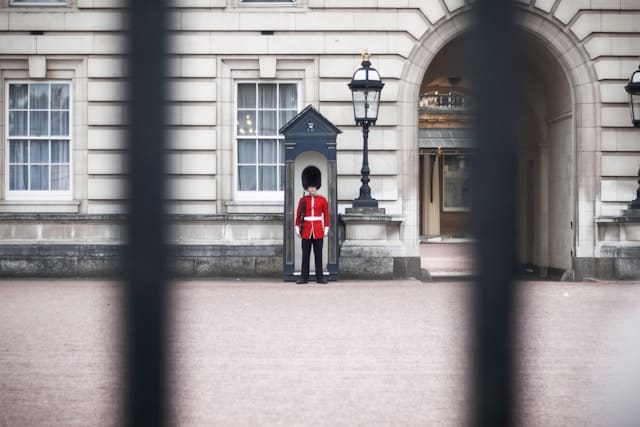What’s the Role of Urban Design in Promoting Physical Activity Among UK Residents?

In modern society, as urbanization continues to rise, it becomes critically important to understand the relationship between urban design and physical activity. Urban design plays a significant role in promoting and facilitating physical activity among residents. Understanding this link is crucial to the development of healthier communities, especially in the United Kingdom, where sedentary lifestyles are increasingly prevalent. This article explores the role of urban design in promoting physical activity, focusing specifically on public open spaces, green environments, and built spaces.
The Link Between Urban Environment and Physical Activity
Urban environment embraces a great influence on the health and well-being of people. It can either encourage or discourage physical activity, depending on the design of the community. Urban design refers to the arrangement, appearance, and functionality of towns and cities, and it substantially influences the physical activity patterns of residents.
En parallèle : Iran opposition and resistance: advocating for democracy and human rights
The urban environment can promote physical activity in several ways. It can provide safe and appealing places for walking, jogging, cycling, and other forms of activity. It can also facilitate social interaction, which can motivate people to be more active. For instance, numerous studies have found a positive correlation between neighborhood walkability and physical activity levels among adults.
For scholars and urban planning experts, the urban environment presents an opportunity to encourage more active lifestyles. By creating environments that are conducive to physical activity, they can help reduce the prevalence of sedentary behavior and associated health issues like obesity and cardiovascular disease.
Cela peut vous intéresser : How Can Personalized Genomics Play a Role in UK’s Preventive Healthcare?
The Role of Public Open Spaces
Public open spaces, such as parks and plazas, are vital components of urban design. They provide opportunities for both recreational and non-recreational physical activities. A park, for example, can be a place for jogging, playing sports, or simply walking the dog, while a plaza can be a place for community events that involve physical activity.
According to a study published by Crossref, the availability, quality, and accessibility of public open spaces significantly influence the physical activity levels of residents. The study found that people who live near well-maintained and easily accessible open spaces are more likely to be physically active than those who do not. This suggests that improving the quality and accessibility of public open spaces can help promote physical activity in urban areas.
Importance of Green Environment
Green environments, including parks, gardens, and other natural spaces, play a crucial role in promoting physical activity. Green spaces provide a refreshing and pleasant environment for people to exercise, play, and engage in other physical activities. They also offer a respite from the built urban environment, providing opportunities for stress relief and relaxation.
Research studies have shown a strong link between access to green spaces and increased levels of physical activity. According to one study, people who live near green spaces are more likely to engage in physical activity and less likely to suffer from obesity and other health problems. This underscores the importance of incorporating green spaces into urban design.
Built Spaces and Physical Activity
Built spaces, such as sidewalks, bike lanes, and recreational facilities, are other key aspects of urban design that can promote physical activity. A well-designed built environment can encourage walking, cycling, and other forms of active transportation. It can also provide safe and attractive places for recreational physical activity.
In a comprehensive study, it was found that adults who live in areas with extensive and well-maintained sidewalks and bike lanes are more physically active than those who live in areas without these features. Similarly, people are more likely to engage in physical activity if they have access to recreational facilities like community centers, gyms, and sports fields. This suggests that enhancing the built environment can significantly contribute to encouraging physical activity among residents.
Social Interaction as a Motivator for Physical Activity
Interaction in social and community spaces can also act as a motivator for physical activity. People often feel more motivated to exercise in a group or community setting. Well-designed urban spaces can encourage such social interactions by providing communal areas where people can gather and engage in physical activities together.
Studies have shown that people are more likely to keep up with regular physical activity when they feel part of a community or social group. Therefore, creating spaces that foster social interaction can motivate residents to lead more active lifestyles.
The urban design plays a pivotal role in promoting physical activity among residents, especially in the UK where sedentary lifestyles are becoming increasingly common. By creating urban spaces that are safe, attractive, and conducive to physical activity, we can encourage residents to lead healthier, more active lifestyles.
The Impact of Environmental Factors on Physical Activity
The environmental factors of urban design play a crucial role in promoting physical activity. These factors encompass the availability of public open spaces, the presence of green environments, and the layout and accessibility of built spaces.
Google Scholar and PubMed Crossref have published numerous studies indicating that individuals living in areas with a high concentration of public open spaces and greenery tend to lead more active lifestyles. Specifically, these environments encourage walking, jogging, cycling, and other forms of exercise, which are essential components of a healthy lifestyle.
On the other hand, the lack of such spaces or poor design can discourage physical activity, leading to a sedentary lifestyle. For instance, areas with limited or poorly maintained sidewalks can discourage walking and cycling, leading to a decline in physical activity among residents.
Furthermore, environmental factors can also influence social interactions, which can, in turn, motivate physical activity. Well-designed urban spaces often include communal areas where people gather, socialize, and engage in community activities. These social interactions can provide a sense of community and mutual motivation, encouraging individuals to maintain regular physical activity.
Designing Urban Spaces to Promote Physical Health
Considering the crucial role urban design plays in promoting physical activity, it’s essential that planners, architects, and policymakers prioritize the creation of urban spaces that facilitate active lifestyles.
This involves improving the quality and accessibility of current public open spaces and creating new ones where needed. Green spaces should be integrated into urban design, providing a refreshing and pleasant environment for residents to engage in physical activities. Moreover, built spaces like sidewalks, bike lanes, and recreational facilities should be well-maintained and safe, encouraging more active transportation and leisure-time physical activity.
Article PubMed studies suggest that creating such environments can lead to substantial public health benefits, like reducing the prevalence of obesity and cardiovascular disease. Indeed, fostering physical activity among residents, particularly older adults, is a public health priority. It’s therefore incumbent upon urban designers to consider these factors in their work.
Conclusion
In conclusion, urban design plays a pivotal role in promoting physical activity among UK residents. The availability and quality of public open spaces, the integration of green environments, and the design of built spaces all significantly affect residents’ levels of physical activity.
Therefore, urban planners, architects, and policymakers should prioritize these elements in their design strategies. By creating safe, attractive, and activity-friendly urban spaces, they can encourage residents to lead healthier, more active lifestyles. This would not only improve individual health but also bring about substantial public health benefits, making urban areas more liveable and vibrant. So, in the light of this, the future of urban design should focus on creating spaces that promote physical activity and overall health.
